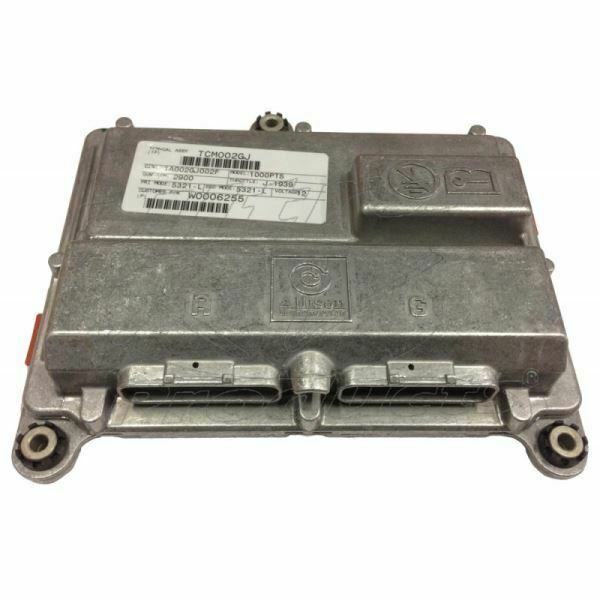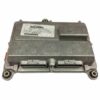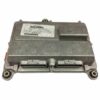Is Your 2001-2005 GM HD Truck Shifting Erratically?
If you’re behind the wheel of a 2001-2005 Sierra 2500/3500 or Silverado 2500/3500 equipped with the legendary 5-speed Allison transmission, you know you have a workhorse. But when the transmission starts acting up—with harsh shifts, getting stuck in one gear, or throwing a check engine light—it can bring your work to a halt. Often, the culprit isn’t the transmission itself, but its electronic brain: the Transmission Control Module (TCM). A failing TCM can cause a host of frustrating and potentially damaging issues. This replacement Transmission Control Module, part number 29537441, is the definitive solution to restore the crisp, reliable shifting your truck is known for.
What makes this module the best choice for your repair is our professional VIN programming service. Before this part ever leaves our facility, we flash it with the latest GM-certified software specific to your truck’s Vehicle Identification Number (VIN). This critical step ensures that the module communicates flawlessly with your truck’s engine and other systems, eliminating the need for an expensive trip to the dealership for programming. It arrives at your door ready for installation, making the repair process as straightforward as possible.
From the Diagnostic Bay
A few months back, a 2004 Silverado 2500HD was towed into the shop. The owner, a contractor, said it suddenly started shifting extremely hard from 1st to 2nd and would sometimes refuse to shift out of 3rd gear, putting it into a ‘limp mode’. The check engine light was on, and his scanner pulled codes related to solenoid performance and lost communication with the TCM. After verifying the wiring harness was intact and the connectors were clean, we diagnosed a classic internal failure of the original TCM. Instead of a costly new unit from the dealer and the associated programming fees, he ordered one of our VIN-programmed modules. We installed it, performed the Allison transmission’s quick-learn procedure, and had him back on the road in under an hour. He called a week later to say the truck had never shifted better.
Common Symptoms of a Failing Allison TCM
If you’re experiencing any of the following issues, a faulty TCM is the most likely cause. Don’t let a small electronic component sideline your powerful truck. Replacing it can solve these problems and prevent further transmission wear.
- ✔ Harsh or delayed shifting between gears.
- ✔ The transmission getting stuck in one gear (limp mode).
- ✔ Check Engine Light illuminated with transmission-related fault codes (e.g., P0700, U0101).
- ✔ Inaccurate or erratic gear indicator display on the dashboard.
- ✔ Complete loss of gear engagement.
- ✔ A noticeable decrease in fuel economy due to inefficient shifting.
- ✔ The vehicle feels like it has a loss of power.
The Plug-and-Play Solution for Your 2001-2005 Sierra 2500 TCM
The complexity of modern vehicle electronics can be intimidating, but we’ve simplified this repair. By programming the module to your VIN before shipping, we handle the most difficult part of the job. This ensures that the replacement TCM has the correct shift points, torque converter lock-up strategy, and communication protocols for your specific vehicle configuration. This isn’t a one-size-fits-all solution; it’s a component precisely prepared for your truck.
Guaranteed Fitment and Compatibility
This module is a direct replacement for vehicles equipped with the 5-speed Allison 1000 series transmission (RPO code M74). It is located on the driver’s side fan shroud for easy access. Please verify compatibility with your vehicle below and by matching your original part’s service number (SERV NO) to our list.
Compatible Models:
- 2001-2005 Sierra 2500 Pickup (with 5-speed Allison M74)
- 2001-2005 Sierra 3500 Pickup (with 5-speed Allison M74)
- 2001-2005 Silverado 2500 Pickup (with 5-speed Allison M74)
- 2001-2005 Silverado 3500 Pickup (with 5-speed Allison M74)
Replaces Service Numbers (SERV NO): 15768288, 15071240, 15163072, 15163073, 15169833, 15169834, 15169835, 15183963, 15187103, 15187104, 29537441, 09385220, 09387820
Installation Note: While this is a straightforward part to replace for those with mechanical experience, we always recommend professional installation. After installation, it is beneficial to perform a transmission fast-learn or adaptive-learn procedure with a capable scan tool, or by following a specific drive cycle, to ensure the smoothest possible shifting as the transmission adapts to the new module.
Frequently Asked Questions
Why do you need my VIN?
Your Vehicle Identification Number (VIN) allows us to load the exact GM-specified software for your truck’s unique configuration, including engine type, axle ratio, and tire size. This ensures perfect communication and performance, just like the original module from the factory.
Is this part difficult to install?
The physical installation is relatively simple. The TCM is typically located on the driver’s side of the fan shroud in the engine bay. It involves disconnecting the battery, unplugging two electrical connectors, and removing a few bolts. The most important part, the programming, is already done for you.
Will this fix my ‘limp mode’ issue?
In the vast majority of cases where limp mode is caused by an internal TCM failure or communication loss codes, this replacement module will resolve the issue. However, it’s always best to have the vehicle properly diagnosed to rule out wiring or solenoid problems.
What happens after I place my order?
After you complete your purchase, you will need to send us your 17-digit VIN. You can typically add this in the notes section during checkout or reply to your order confirmation email. We cannot ship the part until we have your VIN to program it.
Do I need to do anything after installing the new TCM?
After installation, we recommend clearing any old fault codes from the vehicle’s computers. It is also a good practice to perform a transmission adaptive pressure relearn procedure, which can be done with a high-end scan tool or by driving the vehicle through a specific cycle of accelerations and decelerations. This helps the transmission adapt to the new module for optimal shift quality.


